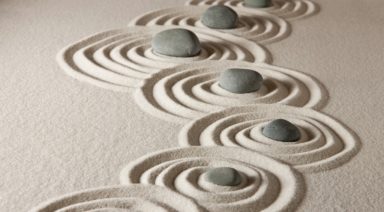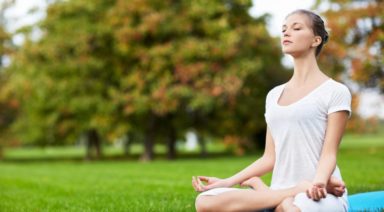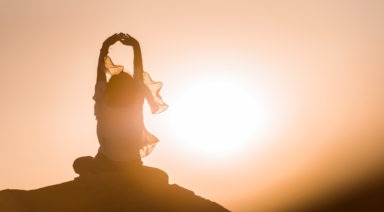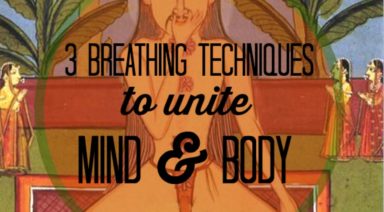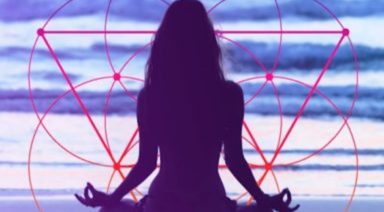How to Prepare a Meditation Space
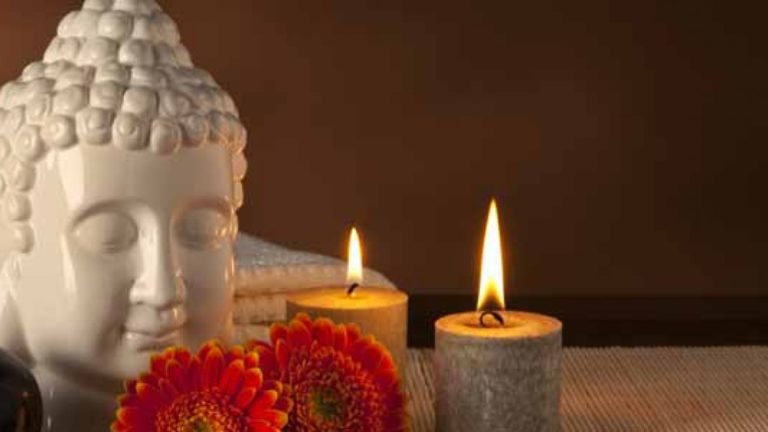
When starting a meditation practice, remember that meditation is not easy because the nature of your mind is to jump around like a monkey from one desire to another. Plus, so many external distractions pull you out of your inner focus and truth.
According to the Bhagavad Gita, the most ancient yogic text, meditation is a state of awareness – not a practice – that automatically happens when the student is ready. You aren’t ready to reach this state until you have exhausted all of your desires except one: to experience your true self within.
Shamatha ‒ Calming the Mind’s Formations
Therefore, what you are doing when you practice meditation on a daily basis is actually the calming and focusing of your mind on one chosen thought – excluding all other thoughts – in order to reflect, observe, and be clearer within. You can then make decisions and take actions with love, knowledge, and a willingness to serve others.
This daily development of your intellect helps steer your life in the right direction instead of relying on your emotional mind to drive you toward some kind of functional insanity. If you’re like me, you know this state all too well.
In Buddhism, this one-pointed focus is called Shamatha. Finding these moments to pause inwardly can help you make better and more peaceful decisions, improving your overall quality of life. This practice of pausing develops your intellect more. It’s a maintenance program that is highly efficient for your busy life.
On a scientific level, many meditation practices help balance the nervous system, which is responsible for regulating the stress in your body. On a cellular level, daily calming techniques like the Here & Now Meditation Guide suggests are highly effective for optimal health both physically and mentally.
Enter the Here & Now Through Meditation
Whether you’re looking to cultivate more authenticity, increase happiness, improve relationships, or reduce stress, all of these things are accessible to you through the practice of meditation. Learn how Gaiam TV can help you transform your life in this video.
Sign up for Here & Now: A Beginner’s Guide to Meditation and fundamentally change your life.
Meditation Space ‒ What You Need
Yoga instructor Rina Jakubowicz meditating on the beach.
When you start this daily practice, you should set yourself up with the following spiritual toys.
Your Sacred Space
Create a physical sacred space for yourself to have some quiet and solo time. If there’s not much privacy in your house, lovingly explain to your family or roommates to honor this space as sacred for you. Define what honoring your space means, and share it clearly with those who live with you.
Create your own altar by finding a small table or trunk. Something that inspires you to sit in front of it.
Inspirational Toys
Add some objects that inspire you. Place them on your new altar. Don’t add too many objects so that your space get cluttered. Keep it to the basics. These external objects are only meant to remind you of your inner sacredness. Don’t get attached to the whistles and bells. Here are some options:
- Your mala
- A candle
- Incense
- Buddha-like statue (symbolic of your devotion to the higher self within you.)
- A photo of your teacher or someone you respect and admire in hopes of emanating his or her state of awareness and wisdom. Personally, my first altar had a small panel of inspiring yogis with the photos of Jesus Christ, Bhagavan Krishna, Mahavatar Babaji, Lahiri Mahasaya, Swami Sri Yukteswar, and Paramahansa Yogananda. My favorite to look at was Lahiri Mahasaya because his face expressed to me that of a silly child in joy, and it made me happy to look at him.
- Your journal/notebook for taking notes on your reflections, insights, questions, and experiences.
- A spiritual text you’re studying presently.
- Anything else that has a deeper meaning to you.
Time of Day
Find a quiet time (ideally in the early morning) to do your practice. Set your alarm 15 minutes earlier and do this right when you wake up. Keep your practice consistent. If you feel you need to also do it at night as a recap of the day, then add that to your agenda as well. The key is to keep it consistent.
Physical Posture
Sit on a cushion so that your hips are higher than your legs in order to help increase circulation. Keep your spine straight in order to strengthen your back. If you need to sit in a chair, just make sure you are sitting on the edge of the chair in order to keep your back straight. The posture is important for focusing purposes. Feel free to do some stretches prior to sitting in order to help you loosen up.
Which Type of Meditation Style is Best For You?

While some may think that meditation requires nothing more than sitting silently, it isn’t necessarily as easy as it seems. The commitment needed to practice every day coupled with the challenge to empty your mind of everyday stressors can be discouraging. However, it doesn’t necessarily need to be.
Meditation has been scientifically proven to reduce stress and anxiety, improve health, and increase happiness. However, the most essential aspect of meditation is appealing to your spirit. It is an entirely subjective practice and there is no right or wrong way to meditate. By practicing every day and finding a style that compliments your soul – you’ll not only experience the joy in meditation, but you might just find you’re better at it then you thought!
The following is a list of the most common types of meditation. Discover which one speaks to you!
Types of Meditation
The following are the most common types of meditation styles. Before you begin, ask yourself a few questions:
- Do you find increased focus through movement?
- Does darkness help you to relax?
- Do you find sounds calming or distracting?
- Are you trying to focus your mind or empty it?
Answering these simple questions can help you to narrow down which type of meditation is most suited for you. If by the end of this article you still can’t decide – Why not try them all?




